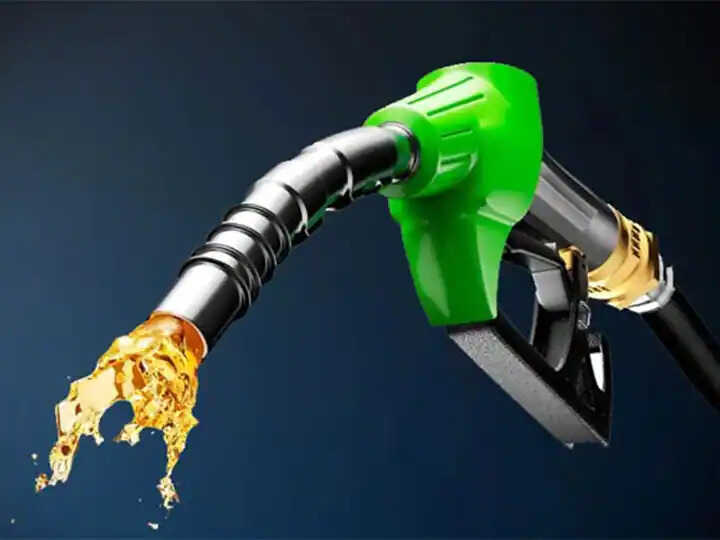Indeed, a year later, the government set what is considered to be the key to stabilizing the earth to prevent the spread of the epidemic. The closure of the crisis has halted the economy as factories have closed, trains have been suspended and flights have been suspended.
This sent the economy into unprecedented 24.4 percent decline in the quarter of June, followed by a 7.3% decline in July-September, forcing the economy into a recession.
However, the economic recovery was better than expected, with GDP surpassing its pre-epidemic rate in the December quarter, growing by 0.4 percent year-on-year.
The reversal has led to ministers predicting sharp reversals such as ‘V’.
However, an increase in the number of cases of coronavirus, despite the introduction of a national vaccine, in recent weeks could hamper recovery.
Unlike other COVID-affected regions such as Europe, India has so far been reluctant to set sensitive limits.
In many countries including India, the second or third wave of COVID has led to partial or partial closure that has delayed the speed of recovery, said D K Srivastava, Senior Policy Advisor, EY India.
“It is the rate at which people receive a vaccine, which will determine the economic performance of FY22. Fortunately, in India, vaccination rates are gathering and strong growth in support of fiscal policy is also set out in the Center FY22 budget. It is hoped that India will show one of the biggest challenges to growth in FY22, ”he said.
Echoing similar views, Aditi Nayar, Principal Economist Economist at ICRA, said that “the number of COVID-19 infections has risen in many Indian states in recent weeks, sparking new restrictions in some areas. If this practice develops, it can reduce the level of recovery that has led to the expected success in the near future, and can lead to some disruption of the supply side. ”
In the meantime, business confidence is improving and it looks like we will be on track to grow even though COVID and entrepreneurs have seen that we must learn to live with COVID and its impact as we provide economic growth, said Vis Visathanathan, Partner of Cyril Amarchand Mangaldas.
To reduce the impact of the COVID-19 epidemic on the economy, the government and the RBI came up with a series of packages in the form of Rs 30 lakh crore or 15 percent of India’s GDP.
The steps taken by the government to deal with the COVID epidemic lead to a ‘V-made’ economic recovery and the country is likely to see double digit growth in 2021-22, Finance Minister Anurag Singh Thakur said in Lok Sabha last week.
He said the government was focused on saving lives during the outbreak without worrying about the lack of funding.
In the next fund, the budget has set aside Rs 35,000 million for the vaccine and the government has guaranteed more funding if needed.
“GST collection over the past five months has been going on for more than Rs lakh crore… As a result of government action during COVID-19, V-economic recovery is taking place. And globally, agencies say India will see two-digit growth in 2021-22, ”he said.
Shortly after the epidemic hit the country, the government in March 2020 announced Rs 1.70 crore crore Pradhan Mantri Garib Kalyan Yojana (PMGKY) to protect the poor and vulnerable from the effects of the health crisis and lockout. Other forms of assistance amounted to Rs 22,000 crore.
This was followed by the Aatmanirbhar Bharat Abhiyan package in May 2020 which focused on service delivery and long-term reform. The five-component incentive package announced by Finance Minister Nirmala Sitharaman with effect from May 13, 2020 had Rs 5.94 lakh crore in the first half which provided credit line to small businesses and subsidies of reputable banks and power distribution companies.
The second phase includes free meals for workers who have been left homeless for two months and debt to farmers, amounting to R10.10 lakh. Spending on agricultural infrastructure and other agricultural systems and associated sectors in the third quarter amounted to Rs 1.5 lakh crore.
The fourth and fifth lines deal mainly with structural changes, including the reduction of the direct investment (FDI) investment defense, the construction of six more airlines, and the full opening of coal mines in the private sector.
To increase consumption during the festive season, the government in October, 2020 announced measures close to Rs 73,000 crore to encourage consumer spending in an effort to reduce declines due to the COVID-19 epidemic.
Aatmanirbhar Bharat Abhiyan 3.0 introduced in November 2020, before Diwali, was Rs 2.65 lakh crore. In total, a maximum of Rs 1.45 lakh crore is allocated to boost production, followed by Rs 65,000 crore in agriculture (fertilizer subsidy), and Rs 10,200 rand? industrial infrastructure, incentives and domestic defense equipment
On the other hand, the RBI has made marketing of up to Rs 12,71,200 in the Indian economy hit by the COVID-19 epidemic until October 2020.
All renewal measures from March 2020 by the Center and the Reserve Bank of India combined amounted to Rs 29,87,641 crore.

